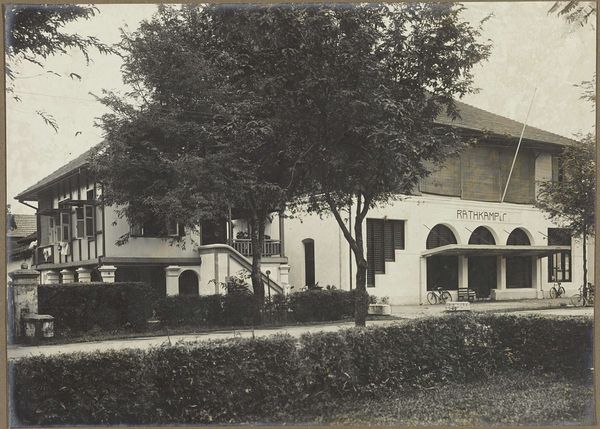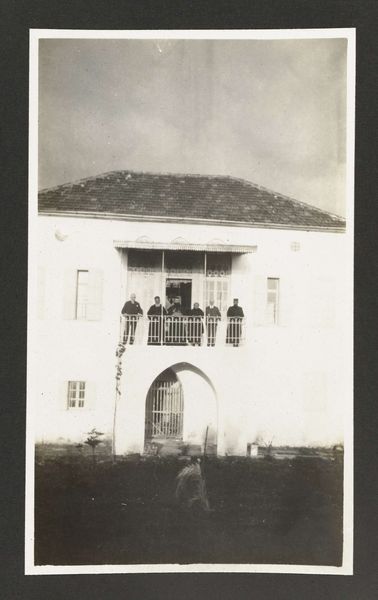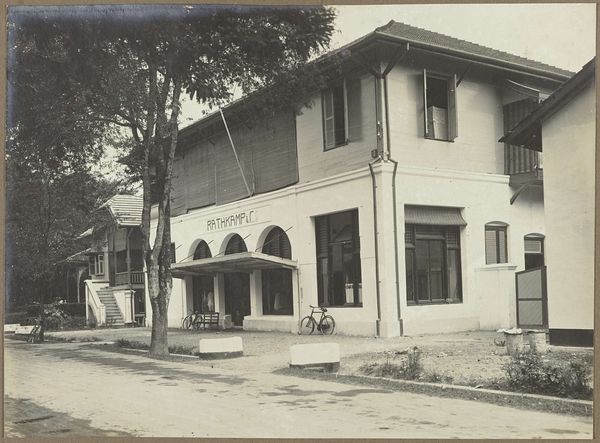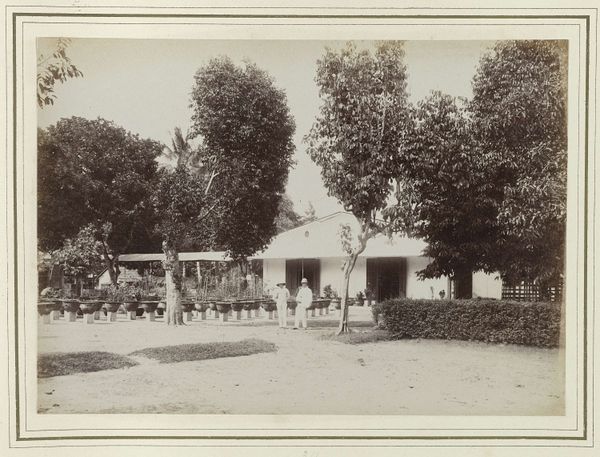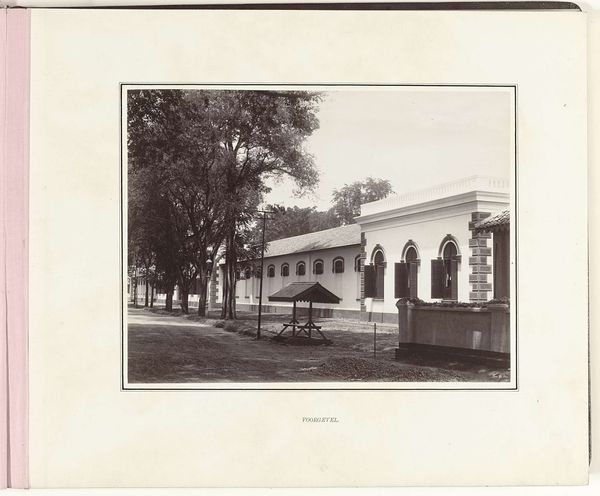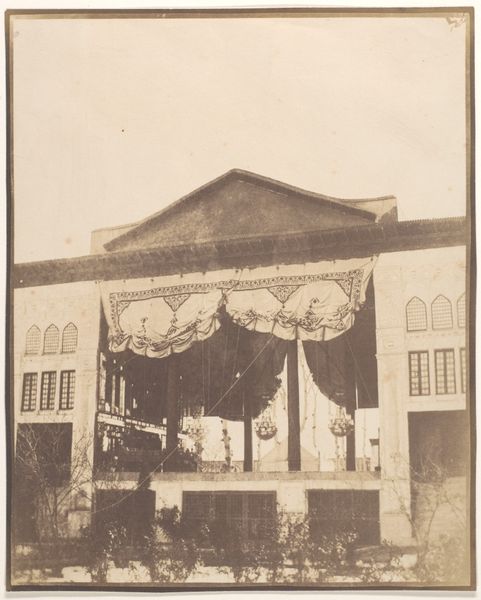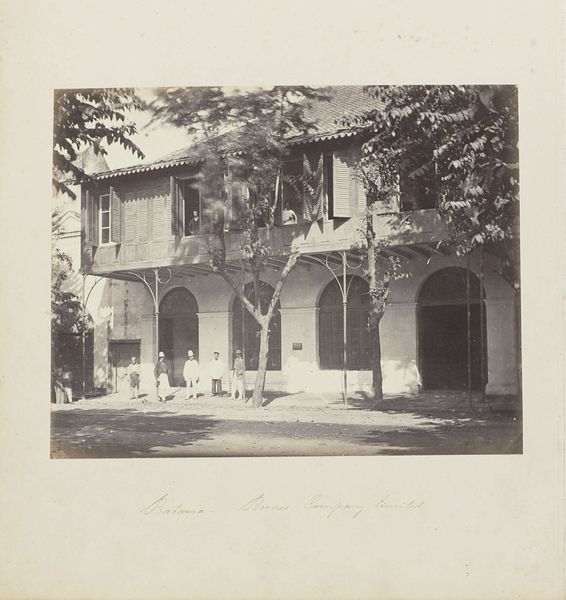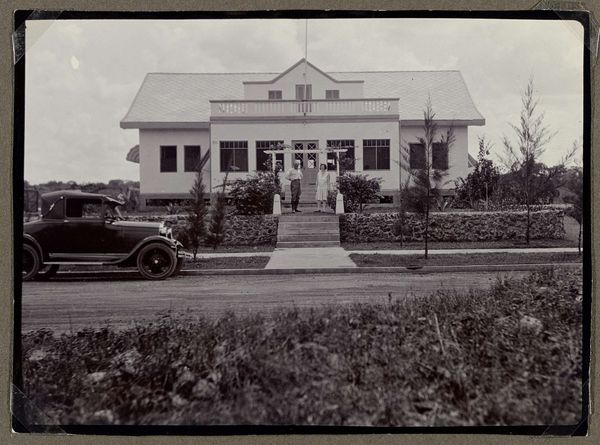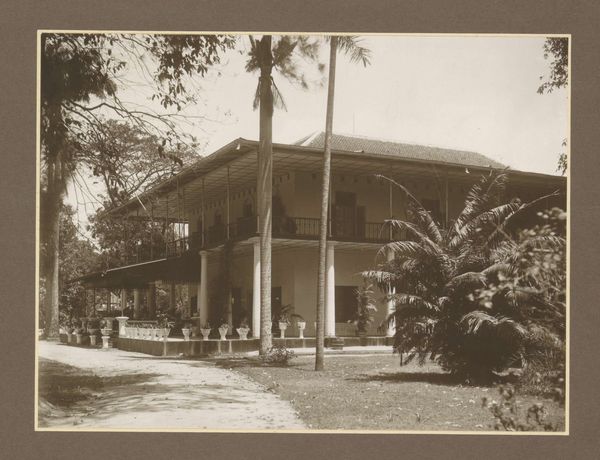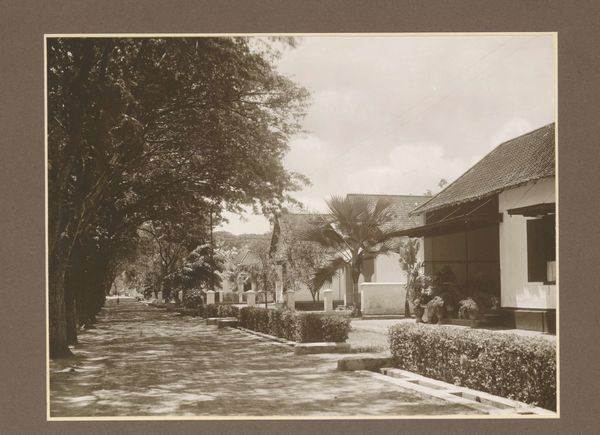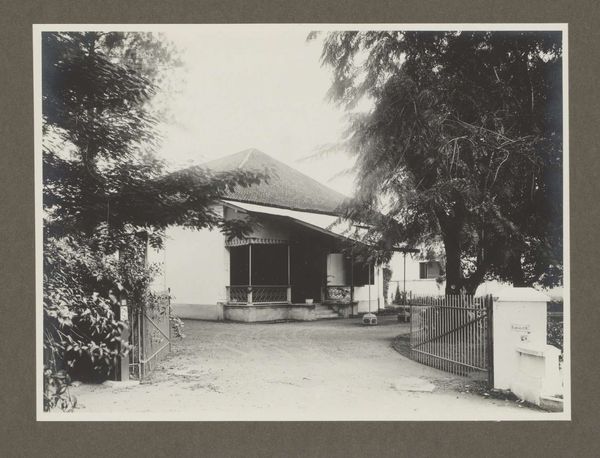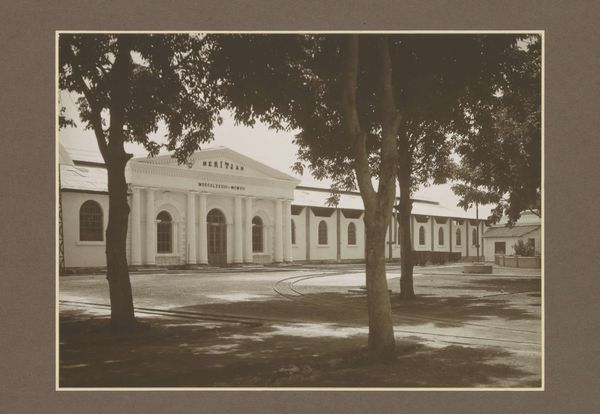
photography, architecture
#
landscape
#
photography
#
orientalism
#
architecture
Dimensions: height 140 mm, width 84 mm, height 124 mm, width 184 mm
Copyright: Rijks Museum: Open Domain
Curator: This is a fascinating image from possibly 1925 by A.G.A. van Eelde. The artwork, captured through photography, is titled "Zomerverblijf der Shahs nabij Teheran, Perzië," or "Summer residence of the Shahs near Tehran, Persia." Editor: My first impression is of stillness, of a forgotten grandeur. The black and white amplifies a sense of distance, both temporal and emotional. There is such rigidity, an imperial architectural statement asserting itself over nature. Curator: Yes, you are right, the architecture has a commanding presence, certainly designed to reflect the Shah's power, but there's also the tradition of Orientalism at play here, a Western fascination and interpretation of the East through imagery and representation. How does that inform your reading of it? Editor: Precisely. The "orientalism" tag reveals layers of socio-political and aesthetic concerns. As you mention, we’re observing not just a place, but a Western construction of it. The lack of people contributes to a narrative about the "exotic" other; observe that a vacant scene allows Western viewers to project their fantasies or expectations of the East without confronting complex realities. Curator: Considering that the picture seems staged, it really accentuates your point. What I find particularly intriguing is the water channel cutting through the scene's lower portion. Its geometry is really interesting in the frame. Editor: Right. That suggests not only opulence but also control. This could also refer to power dynamics between humans and nature; like water being controlled by civilization. Are the Shahs mastering the natural environment, imposing authority and power? It adds depth to our interpretation and complicates an immediate reading of serenity. Curator: Indeed. The historical and political subtexts, as we see, can be rather complex. This image really makes you pause and reflect on both the art and the colonial and socio-political environment of its production and reception. Editor: And the lasting impact of such images—they inform contemporary narratives of identity and place. Recognizing that orientalist legacy helps to develop better nuanced readings of our own cultural production.
Comments
No comments
Be the first to comment and join the conversation on the ultimate creative platform.
